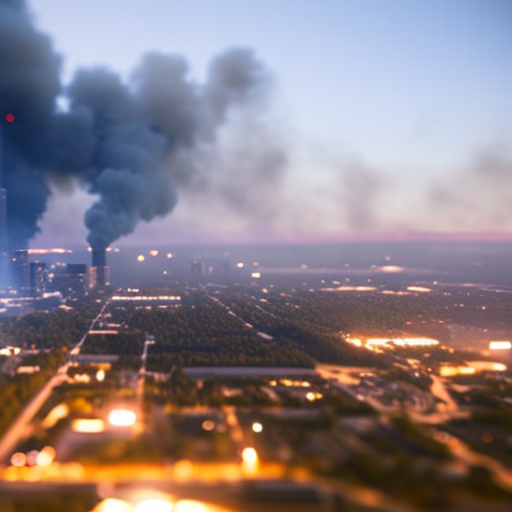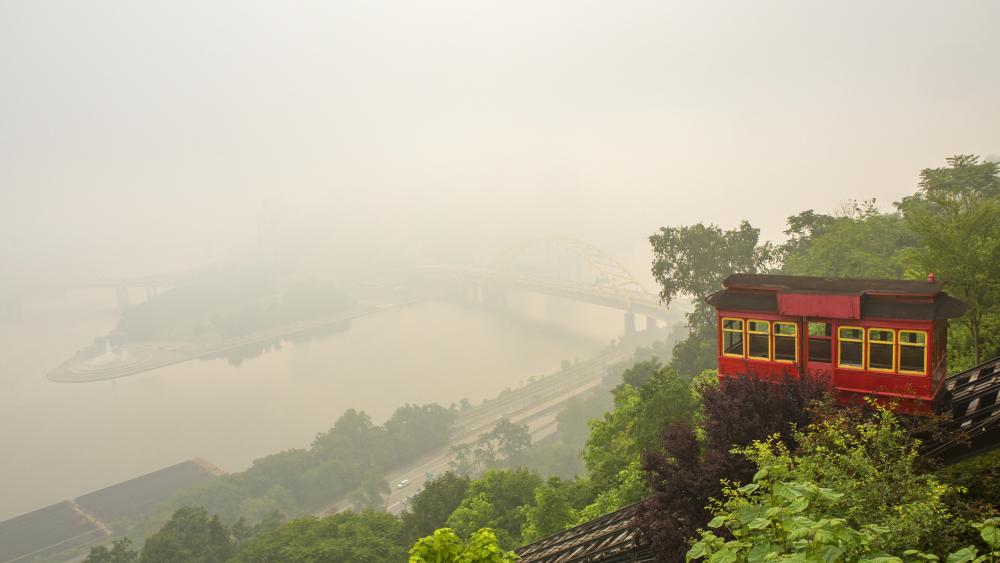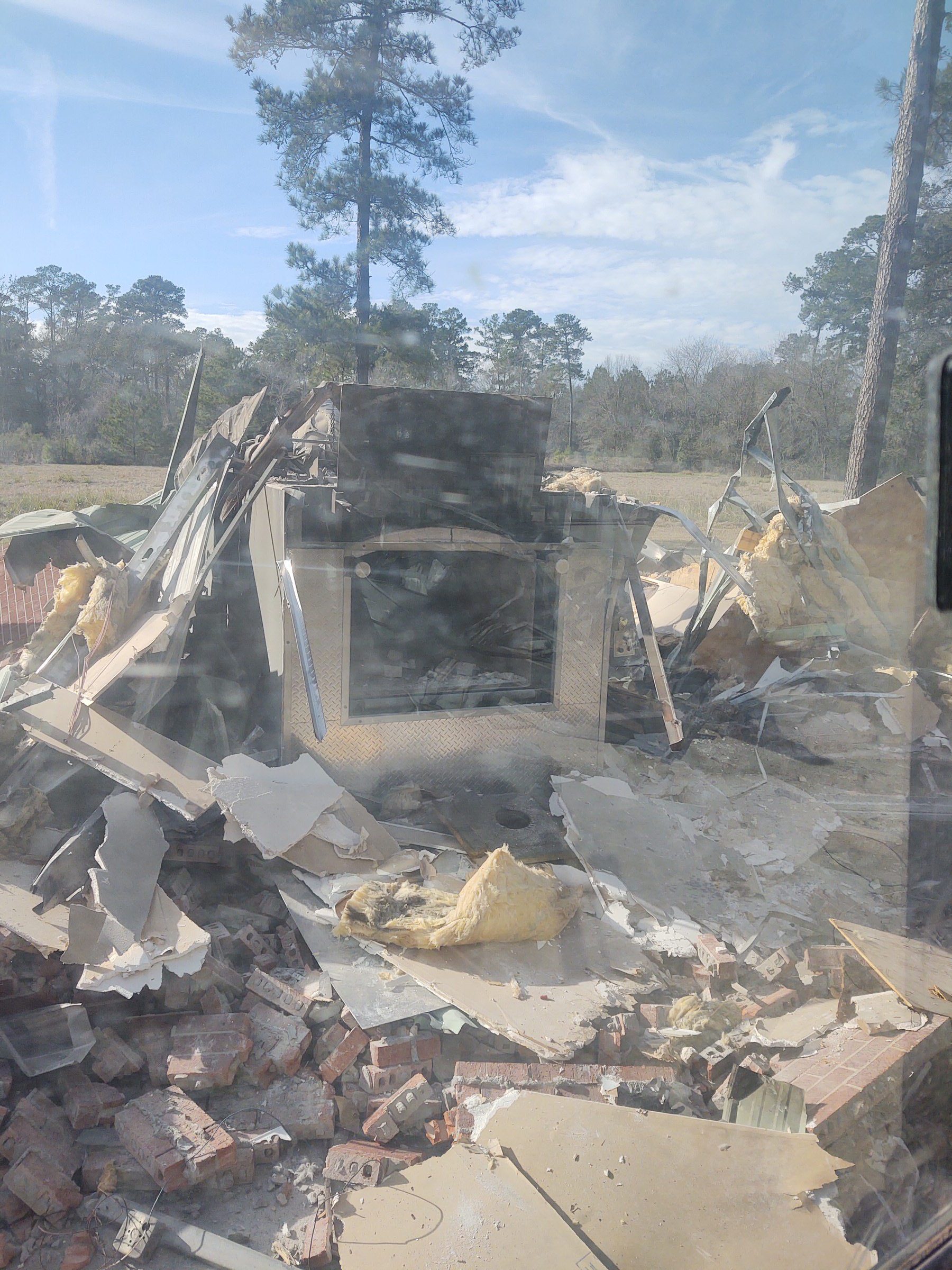
Canadian Wildfires Expose Northeastern US to Unprecedented Smoke Levels

Introduction
The Canadian wildfires of June 2023 exposed a large portion of the Northeastern United States to unprecedented levels of smoke. A new model that combines wildfire smoke forecasts and data from ground-based sensors may help public health officials plan targeted interventions in areas most at risk for the negative health effects of unexpected smoke events and air pollution, according to a team led by Penn State scientists.
Research Findings
The researchers reported their findings in the journal Science of the Total Environment.
“Statistical analyses suggest that situations like last year’s Canadian wildfires, where smoke travels long distances to affect the Eastern United States, may become the norm,” said lead author Manzhu Yu, assistant professor of geography at Penn State. “Our research can help public health officials in urban and rural areas plan targeted interventions for communities at higher risk of harmful air pollution during wildfire smoke events.”
Methodology
The researchers focused on the periods between June 6-8 and June 28-30, 2023, when weather conditions and a coastal storm pushed large amounts of smoke from Canada into the Northeastern United States. They used data from ground-based sensors and a form of artificial intelligence called deep learning to improve a weather forecasting model from the National Center for Atmospheric Research. The model — the Weather Research and Forecasting model with Chemistry, or WRF-Chem — provides hourly data on surface concentrations of fine particulate matter (PM 2.5). Found in wildfire smoke and other forms of air pollution, these tiny particles can reach the lungs and cause health issues.
Environmental Justice Assessment
The scientists also studied anonymized mobility data from devices like smartphones to see how people changed their travel activities during the smoke events. Additionally, they conducted an environmental justice assessment using data from the U.S. Environmental Protection Agency to see if certain environmental and demographic factors correlated to increased vulnerability to negative health outcomes from wildfire smoke. These factors included variables like percentage of the population with less than a high school education, minority status, heart attack and asthma hospitalization rates, and existing pollution burdens from sources like heavy traffic and power plants. They studied these factors at the county level, from Pennsylvania and New Jersey up through Maine, to see if certain communities shared a larger part of the pollution burden than others.
Improved Forecasting Model
The team found that the refined forecasting model better estimated the magnitude and timing of PM 2.5 spikes, measured in micrograms per cubic meter of air (µg/m3), across the study area than the current forecasting model. When looking at how predicted data matches observed data, with 0 µg/m3 of PM 2.5 signifying that the model exactly matches ground observations, the current forecasting model scored a -6.872 µg/m3, marking a large underestimation of particulate levels. The refined model scored a 0.160 µg/m3, marking a slight overestimation of particulate levels that aligned much closer to what the ground sensors measured. In addition, the researchers found that urban and rural communities already burdened by existing environmental pollution face higher air pollution levels during unexpected smoke events than other areas.
Targeted Interventions for Urban and Rural Areas
“The good news, according to our findings, is that when people hear about wildfire smoke, they tend to reduce their mobility,” Yu said. “But we found that during these smoke events New York City, Philadelphia and the surrounding counties still showed high mobility activities. We probably need to think about targeted interventions in urban areas because with so many people living in the area, exposure rates to unhealthy air are very high.”
Rural communities burdened by pollution from power plants and mines may have particular needs as well, she said. For example, she explained, Bennington County, Vermont, has few demographic factors that would make it more vulnerable to environmental pollution. However, it is home to multiple mines, heavy traffic, hazardous waste storage sites and more, which all contribute to higher environmental pollution scores. Those factors amplified air pollution levels during the smoky days.
“Public health interventions are usually based on population concentrations, which are naturally higher in urban areas,” Yu said. “Knowing these existing vulnerabilities in rural areas can help officials better serve these areas and protect the public’s health.”
Individual Actions and Policy Recommendations
In the meantime, individuals can take steps now to protect their health during the upcoming wildfire season.
- Have an air filter and indoor air pollution monitor in their homes
- Enhance the insulation around windows and doors if smoke levels are high
- Work from home if possible or use a high-quality mask when traveling outdoors
- Advocate for standards and policies for organizations to respond to smoke days
“We’re not used to smoke events, and we need some sort of policy or standard for protecting the public’s health,” Yu added.
Contributors and Funding
In addition to Yu, contributors to this research from Penn State include Zhenlong Li, associate professor of geography, and doctoral students Shiyan Zhang and Huan Ning; and Kai Zhang, Empire Innovation Associate Professor at the University of Albany’s School of Public Health.
Penn State, through the Miller Faculty Fellow Award from the College of Earth and Mineral Sciences, supported this research.
SDGs, Targets, and Indicators
-
SDG 3: Good Health and Well-being
- Target 3.9: By 2030, substantially reduce the number of deaths and illnesses from hazardous chemicals and air, water, and soil pollution and contamination.
The article discusses the negative health effects of wildfire smoke and air pollution on communities in the Northeastern United States. This aligns with SDG 3, which aims to ensure good health and well-being for all. Target 3.9 specifically addresses reducing deaths and illnesses from air pollution, which is relevant to the issues highlighted in the article.
-
SDG 11: Sustainable Cities and Communities
- Target 11.6: By 2030, reduce the adverse per capita environmental impact of cities, including by paying special attention to air quality and municipal and other waste management.
The article emphasizes the need for targeted interventions in urban areas, such as New York City and Philadelphia, to address high air pollution levels during wildfire smoke events. This aligns with SDG 11, which focuses on creating sustainable cities and communities. Target 11.6 specifically addresses improving air quality in cities, making it relevant to the issues discussed in the article.
Table: SDGs, Targets, and Indicators
| SDGs | Targets | Indicators |
|---|---|---|
| SDG 3: Good Health and Well-being | Target 3.9: By 2030, substantially reduce the number of deaths and illnesses from hazardous chemicals and air, water, and soil pollution and contamination. | N/A |
| SDG 11: Sustainable Cities and Communities | Target 11.6: By 2030, reduce the adverse per capita environmental impact of cities, including by paying special attention to air quality and municipal and other waste management. | N/A |
Copyright: Dive into this article, curated with care by SDG Investors Inc. Our advanced AI technology searches through vast amounts of data to spotlight how we are all moving forward with the Sustainable Development Goals. While we own the rights to this content, we invite you to share it to help spread knowledge and spark action on the SDGs.
Fuente: psu.edu

Join us, as fellow seekers of change, on a transformative journey at https://sdgtalks.ai/welcome, where you can become a member and actively contribute to shaping a brighter future.






